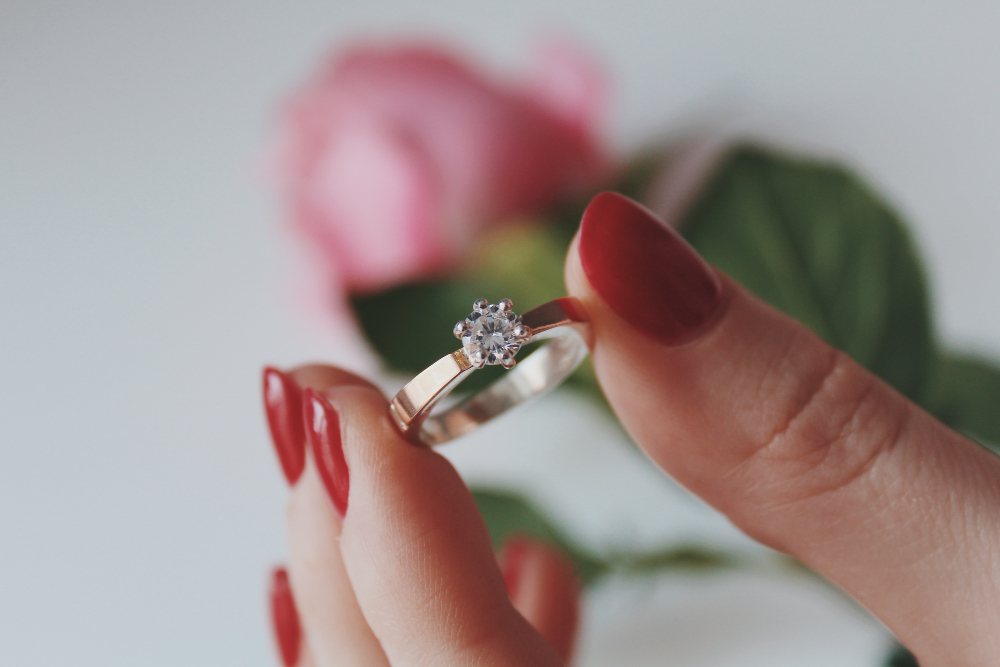Choosing the perfect engagement diamond ring is a significant step in any couple’s journey. It’s not just about the sparkle and budget; it’s about finding a symbol of love and commitment that resonates with your partner’s style and personality. This guide will take you through seven essential steps to help you select the ideal diamond ring, ensuring that your proposal is as unforgettable as the ring itself.
Step 1: Understand the 4Cs of Diamonds
The first step in selecting a diamond ring is understanding the 4Cs: Cut, Color, Clarity, and Carat.
- Cut refers to how well the diamond has been shaped and affects its brilliance. The better the cut, the more the diamond sparkles.
- Colour is graded from D (colourless) to Z (light yellow or brown). Colourless diamonds are the most valuable.
- Clarity indicates the presence of blemishes or inclusions in the diamond. The fewer the imperfections, the higher the clarity grade.
- Carat is the weight of the diamond. Larger diamonds are rarer and more expensive, but carat weight alone doesn’t determine value; cut, colour, and clarity also play significant roles.
Understanding these elements will help you balance quality with budget.
Step 2: Set a Budget
Before diving into the world of diamond shopping, set a budget. It’s easy to get carried away, but remember, an engagement ring is a symbol of love, not financial strain. A budget will guide your choices and help you focus on finding the best ring within a comfortable price range.
Step 3: Choose the Right Shape
Diamonds come in various shapes, each offering a unique aesthetic. Round diamonds are timeless and the most popular, but other shapes like oval, princess, emerald, and pear offer distinctive looks. Consider your partner’s style and preference when choosing the shape.
Step 4: Select the Metal for the Band
The metal for the band plays a crucial role in the ring’s overall look. Popular options include white gold, yellow gold, rose gold, and platinum. Each metal has its advantages and distinct appearance. Consider durability, maintenance, and how the metal complements the diamond and your partner’s skin tone.
Step 5: Consider the Ring Setting
The setting of the ring is where the diamond sits, and it can dramatically affect the ring’s appearance. A prong setting is classic and highlights the diamond, while a bezel setting offers more security for the stone. Halo settings add extra sparkle with smaller diamonds around the main stone. The setting should align with your partner’s lifestyle and taste.
Step 6: Get the Right Size
Ensuring you have the correct ring size is crucial. If it’s meant to be a surprise, you might need to get creative – borrow one of your partner’s rings (from the correct finger) to get sized by a jeweler, or ask friends or family for help.
Step 7: Certifications and Warranties
When purchasing a diamond ring, always ask for certification from a reputable lab like the GIA (Gemological Institute of America). This certification provides an unbiased analysis of the diamond’s quality. Additionally, inquire about warranties and return policies, as these can provide peace of mind and protection for your investment.
Conclusion
Picking the perfect engagement diamond ring involves a mix of practical considerations and personal touches. By understanding the basics of diamond quality, setting a budget, choosing the right shape, metal, and setting, ensuring the correct size, and securing certifications and warranties, you can confidently select a ring that symbolizes your love and commitment. Remember, the perfect diamond ring is one that reflects the unique bond you share with your partner.


